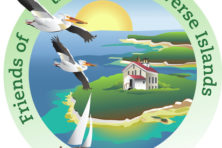WILD THINGS: National Fishing and Boating Week, 30 by 30 Initiative, and More
- Share
- Tweet
- Pin
- Share

Whether you want to target smallmouth bass, perch, walleye or pike on Green Bay; trout and salmon on Lake Michigan; or panfish, pike and largemouth bass on area inland lakes, now’s the time to try your luck.
Bluegills, smallmouths, pike and rock bass are active in many of the bays, harbors and marinas on Green Bay, and panfish are spawning in the shallows of inland lakes.
Ahnapee and Kewaunee River anglers are tangling with a wide variety of species, including panfish, bass, bowfin, carp and pike; and Lake Michigan is producing an early-season bonanza of rainbow trout, chinook salmon and lakers.
Some years ago, National Fishing Week had a theme of Catch a Smile, which said a lot about what taking kids fishing can do. Today it’s known as National Fishing and Boating Week, and the 2021 version runs two weekends, starting June 5-6: also Wisconsin’s annual Free Fishing Weekend. No licenses or stamps will be needed those two days, but all other regulations will apply.
The economic aspects of water sports are staggering. The combined economic impact of boating and sportfishing in the U.S. is more than $250 billion annually – roughly half from each.
In Wisconsin alone, more than 2 million anglers fish each year, including those younger than 16 who don’t need to purchase a license. The combined economic impact from sportfishing here is more than $2 billion annually.
Wisconsin also has more than 600,000 registered boaters, with a combined economic impact of nearly $5 billion.
Yet when you allow the boy inside the man to “remember when,” it’s probably not the money or the gear he recalls or finds important.
In a national survey asking 1,000 Americans what they enjoyed doing most with their dad as a child, more than one-third of the men and 29% of the women chose fishing and outdoor activities. That’s three times the number who recalled playing sports, board games or card games; and it’s five times more than those who said they liked attending sports events or going to movies with their father.
The American Sportfishing Association says 85% of freshwater anglers are introduced to fishing by age 13. Most find bluegills, sunfish, bass, perch and bullheads to be willing biters in lakes, ponds and rivers.
It’s important to use rod-and-reel combos that youngsters can handle and have fun with. Some of the bargain rigs sold in national chain stores will handicap a beginner because most have cheap drag systems and are spooled with line that’s much heavier than necessary. Instead, using a quality ultra-light will give a child a “reel” thrill!
Talk to folks at area bait shops if you’re not sure where to start. Not only will they have suggestions, but they’ll also be able to recommend baits and depths to try, as well as lakes where boat rentals are available.
And remember to take the important extras: water, snacks, sunscreen, insect repellent and life jackets.
Use a small cooler to ice the fish you want to eat, or keep them in a live basket. Stringers are OK in cool water if the trip isn’t an all-day affair.
A favored cooking method involves rolling fresh fillets in the breading mixture of your choice, then pan-frying them in a combination of butter, coconut oil and olive oil until they turn a deep, golden brown. That’s the kind of meal that has “summer vacation” written all over it.
Need more help? Tap into a wealth of info at takemefishing.org and dnr.wisconsin.gov/topic/Fishing.
30 by 30 Initiative
A multi-agency federal report with recommendations about how to achieve a goal of conserving 30% of all U.S. lands and waters by the year 2030 – known as the 30 by 30 Initiative – has been released.
Mike Leonard, vice president of government affairs for the American Sportfishing Association, said the initiative has generated a lot of attention within the recreational fishing community, but not always in a positive way. He said some believe it could be used as a means to arbitrarily restrict recreational fishing access.
“However, we are pleased that the Biden administration is approaching 30 by 30 with an understanding of the significant cultural, economic and conservation benefits that recreational fishing provides to the nation,” Leonard said.
The “Conserving and Restoring America the Beautiful” report outlines a decade-long challenge to pursue a locally led, voluntary, nationwide effort to conserve, connect and restore America’s lands, waters and wildlife.
“There are many valuable programs that benefit aquatic resource conservation and fishing opportunities, including the National Fish Habitat Action Plan, State Wildlife Action Plans, the National Marine Sanctuaries System, the National Estuarine Research Reserve System and the newly proposed Civilian Climate Corps,” Leonard said. “We appreciate that these are the types of legitimate conservation programs that the Biden administration is prioritizing in its 30 by 30 plan.”
Learn more at huntfish3030.com.
Report Eagle Nests
Once endangered, bald eagles are now flourishing in Wisconsin, with more than 1,700 known nests occupied by mated pairs last year. The count continues to climb as the public learns that Department of Natural Resources staff members want to document and survey all known bald-eagle nest locations.
Find out more about Wisconsin’s eagles, and report your nest sightings at dnr.wisconsin.gov/topic/WildlifeHabitat/baldeagle.html.
Weekly Water Levels
As of May 28, Lake Michigan was down 18 inches from the record high in May of 2020, but it was still 18 inches above the 100-year average. Water levels were four feet above the record low, set in 1964.

